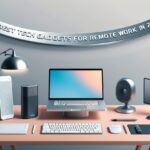In this article, I will discuss the step-by-step process of how to alternate colors in Google Sheets. One way of achieving this is by using Google Sheets’ built-in alternating colors feature. When you do this, you can have a color pattern for your rows or columns by clicking a few times.
Besides that, I will also explain how you can personalize these colors to match your taste and make them dynamic so that they can be affected by the changes in data. Therefore, in summary of this post, you may easily add shades to your sheets, giving better organization and visual rendition of the numbers on the screen.
What Is Google Sheets?
Google Sheets is a powerful web-based spreadsheet software provided by Google in its Google Workspace. It allows people to create, edit, and work together on spreadsheets in real-time, making it a practical toolkit for individual or official purposes. The application can be accessed through any device connected to the internet,
It supports many functions, such as complex calculations, data analysis, chart creation, and integration with other Google services like Google Forms and Data Studio. Its collaborative capabilities enable several users to operate on a document concurrently with automatically saving changes, thereby boosting productivity and collaboration.
How To Alternate Colors in Google Sheets?
To alternate colors in Google Sheets, follow these steps:
Open Your Google Sheet: Access the Google Sheet where the requirement to use different covers appears.
Select the Range: Mark out which cells you select or range and want colors alternated. You can do this on an entire sheet, a range of your choice, or just a few rows or columns.
Open the Format Menu: At the top of the screen, go to the “format” menu and click it.
Choose Alternating Colors: From that drop-down menu, choose “Alternating colors.” As a dropdown, there will be a panel on the right side of your screen for you to work with.
Choose a Color Style: The pane will include a default style for your selection. You can choose from several pre-made color styles or create one yourself by choosing particular colors for headers, odd rows, and even ones.
Customize if Needed: You can alter these colors further by clicking any colored boxes and changing the shades for headers and odd numbers, respectively.
Apply the Style: Once done selecting, press “Done” in your panel.
Selecting this option in your dialog box and then applying it accordingly using the cell ranges below helps improve the visibility and readability of given data involving patterns. Conversely, you could make some alterations when necessary whenever you repeat all those steps.
Manual Method to Alternate Colors
: here’s a step-by-step manual method to alternate colors in a spreadsheet, explicitly using Microsoft Excel:
Open the Spreadsheet: Launch Microsoft Excel and open the spreadsheet you want to work on.
Choose a Range: Click and drag over the range of cells where you want to apply alternating colors.
Go to Fill Color: Find the “Fill Color” option. In Excel, it is typically located in the “Home” tab on the ribbon under the “Font” section. This looks like a paint bucket icon.
Select Initial Color: Click on the “Fill Color” option and pick a color you wish to use for the first row or section. Consider selecting light blue as an example.
Put On the Color: With your range still selected, click on the fill color icon again and select your chosen color. The chosen color should now be visible in your selected range.
Alternate Colors: For color alternation, manually select every other row or section within the range. For instance, if you colored row 1, skip row 2 and change row 3 to another one colored differently.
Continue like this until all rows are covered; this means alternating colors each time for every other such thing as cells or sections until you finish doing so
Review changes against your spreadsheet at this point when applying colors.
Preserve Changes: Save your spreadsheet so that any changes made will not be lost.
This approach also applies to similar software platforms, such as Google Sheets or LibreOffice Calc, but not with exactly similar steps if they differ slightly.
Advanced Alternating Color Techniques
Here are some advanced techniques for switching colors in worksheets, particularly in Microsoft Excel.
Conditional Formatting: This Excel tool allows you to set up cells so that they format automatically depending on a particular condition. Using conditional formatting, you can alternate colors based on values, text, or formulas. For example, you may choose one color for even-numbered rows and another color for odd-numbered rows.
Using Formulas: You can dynamically alternate colors based on certain conditions. For instance, the MOD function can check whether a row number is even or odd and then apply different formatting as required. The following formula can be used with conditional formatting:
Table Styles: Excel has pre-designed table styles that will auto-alternate row colors. Just convert your data range into an Excel table (Ctrl + T) and select a table style from the “Table Styles” gallery under the “Design” tab. Excel will automatically provide alternating row colors for the entire table.
Custom VBA Code: If you are comfortable working with VBA (Visual Basic for Applications), you can write macros that automatically alternate colors. A macro may loop through each row within a defined range and assign colors according to specific criteria or patterns.
Using Color Scales: Instead of alternately using two specified colors, the application could employ color scales to generate cell value-based color gradients. This is often useful when illustrating data trends or distributions.
Copying Formatting: If there is a pattern of alternating colors that one would like to apply elsewhere in their worksheet, it becomes possible to copy-paste formats. The “Format Painter” tool is used for other cells/ranges by selecting any cell with the desired format.
These advanced techniques give more power over switching colors in Excel, thus meeting varied needs and preferences.
Using Conditional Formatting to Alternate Colors
The use of conditional formatting, involving alternating colors in Excel, is a powerful technique that can apply formatting automatically based on specific rules or conditions. Here’s how you can use conditional formatting to alternate colors for rows in Excel:
Select the Range: Start by selecting the range of cells where you want to apply alternating colors.
Open Conditional Formatting: Go to the “Home” tab on the Excel ribbon and click on “Conditional Formatting” in the “Styles” group.
Choose New Rule: In the dropdown list appearing, choose “New Rule…”
Seledropdowne Type: Under the “New Formatting Rule” dialog box, select “Use a formula to determine which cells to format.”
Enter the Formula: Insert a formula to decide when to apply formatting. To alternate colors for every other row,
Choose Formatting: Click on the “Format…” button and select the desired formats. Select the Fill tab to select a color or pattern fill for alternate rows. After selecting your preferred format, press OK.
Apply Formatting: Once you have set up your rule and chosen your formatting, hit OK again in the New Formatting Rule dialogue box to apply conditional formatting concerning the selected range.
Review and Adjust: As it stands now, check if your spreadsheet has implemented conditional formatting properly; otherwise, go back and forth in case you have some errors while typing formulas or selecting cell ranges until it works well.
Save Your Work: Save changes done in this sheet.
Excel will automatically apply alternating colors to a selected range according to some specified rule by using conditional formatting with a formula like this one. This dynamic method will adjust if rows are inserted or deleted in the range.
Conclusion
Google Sheets lacks a direct feature like Excel’s Table Styles for alternating colors. Moreover, this effect can still be achieved most effectively via the conditional formatting section. With that said, you should select the range of cells to format before navigating to “Format” and clicking on “Conditional Formatting,”
which allows a user to enter a custom formula such as =ISEVEN(ROW()) or =ISODD(ROW()) for even and odd numbered rows respectively. This will automatically alternate colors according to row numbers. This makes your spreadsheet look better and helps it read more easily, allowing you to differentiate between one data row and another easily.
Though requiring slightly more initial preparation work than Excel, Google Sheets’ conditional formatting makes the color change flexible and dynamic while catering to various formatting preferences.









